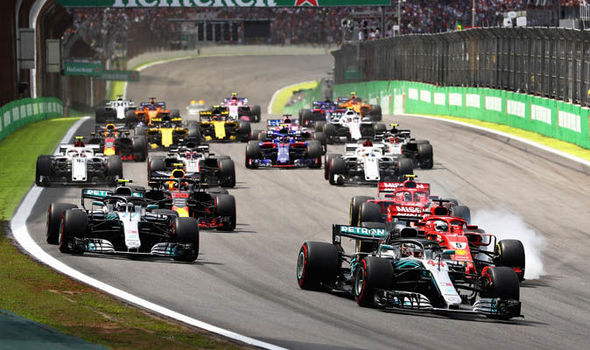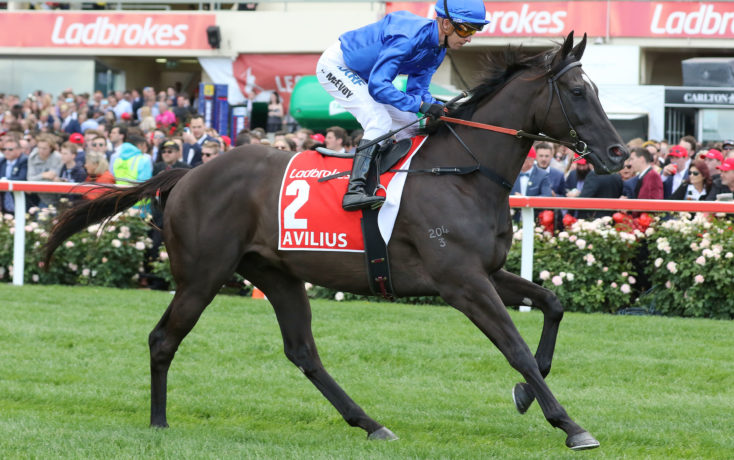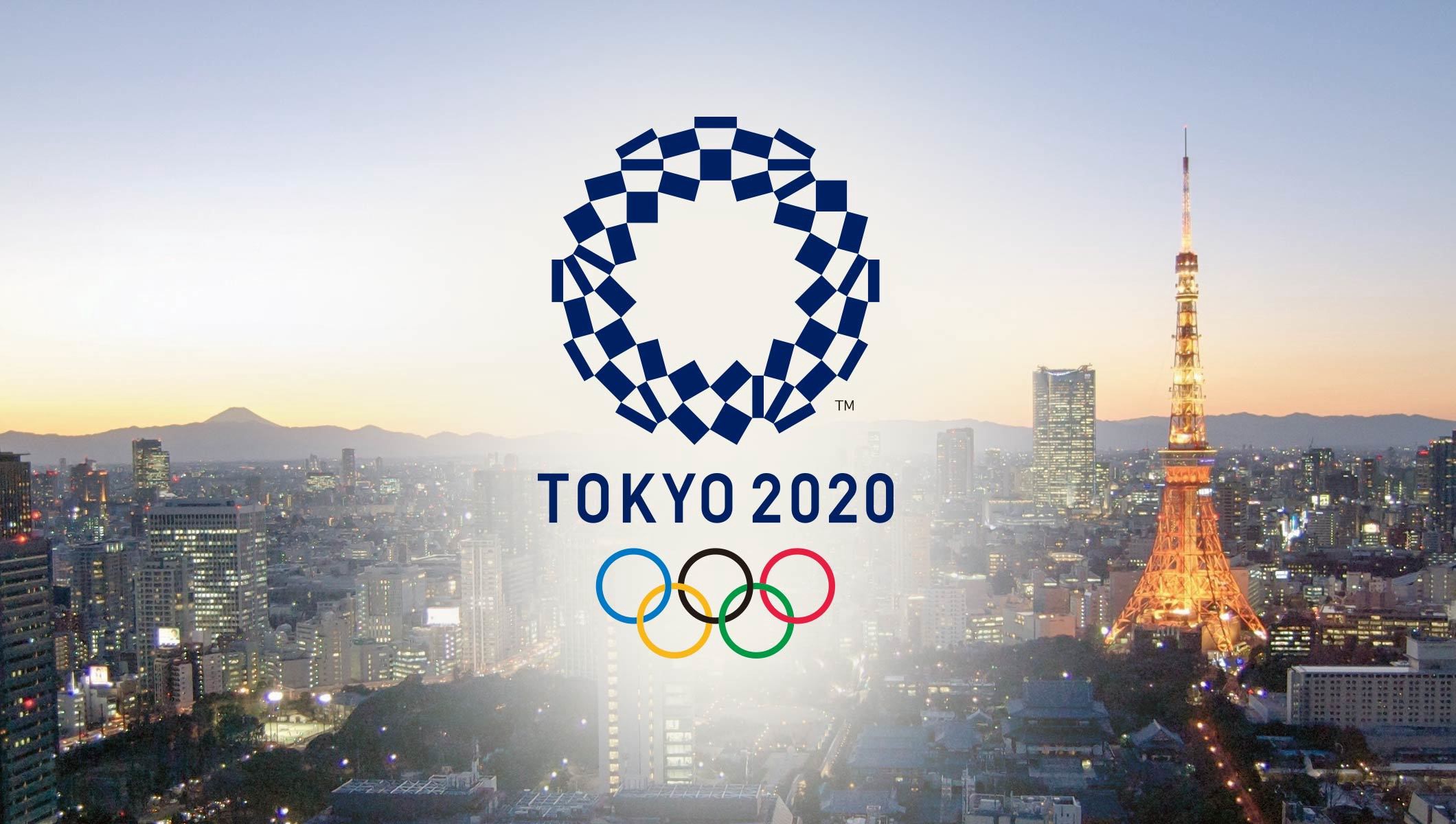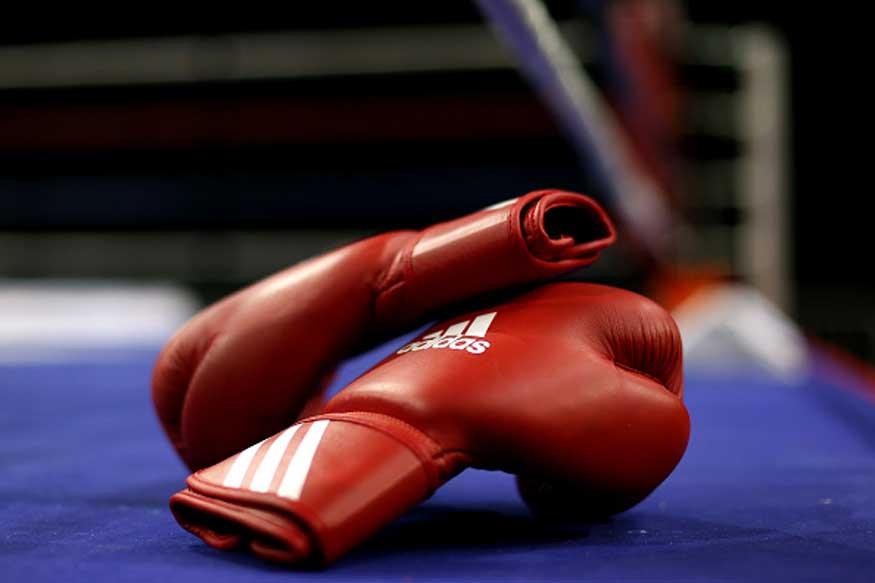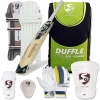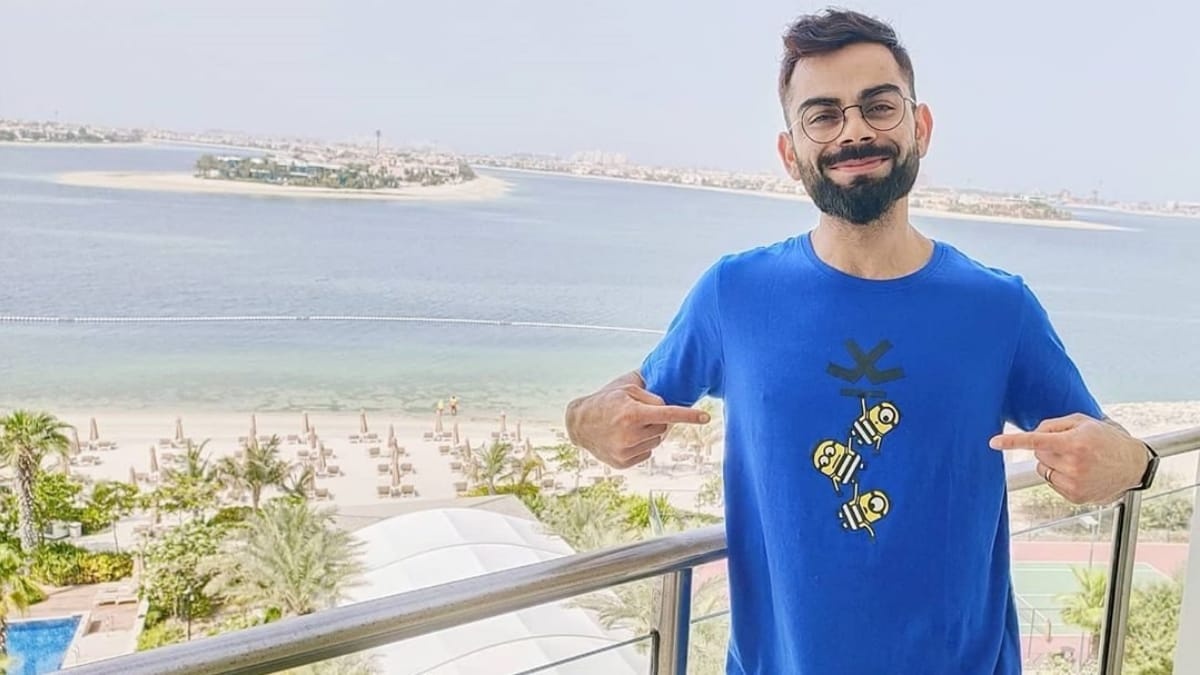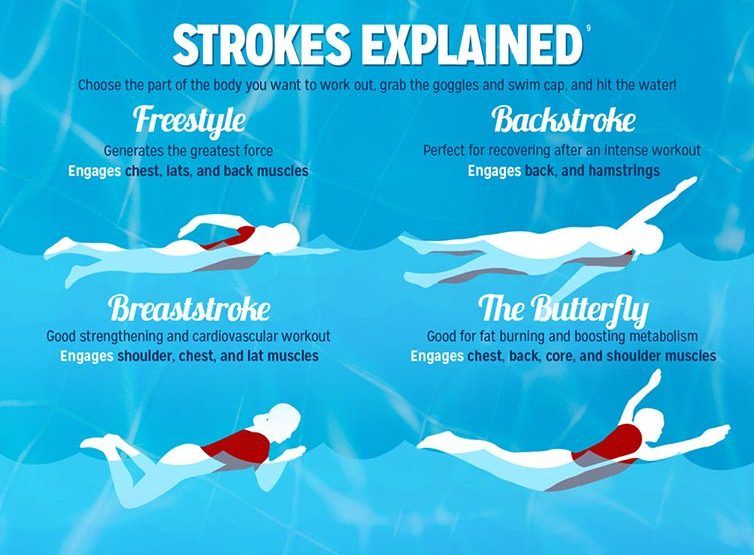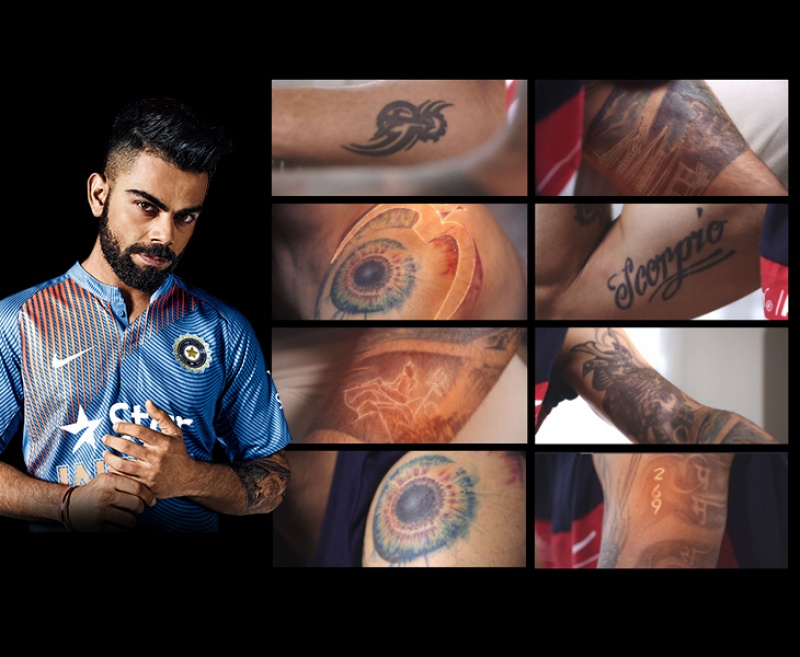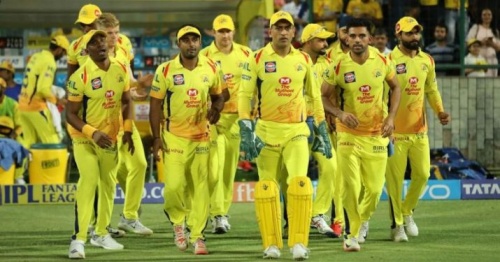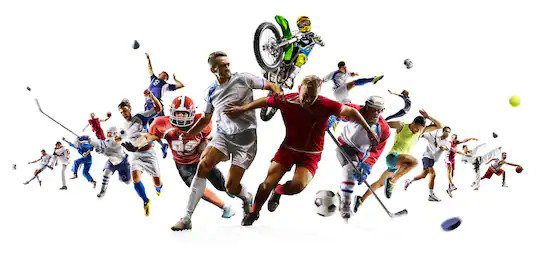FIA Formula One World Championship
The 2019 FIA Formula One World Championship is an ongoing motor racing championship for Formula One cars which marks the 70th running of the Formula One World Championship. It is recognized by the governing body of international motorsport, the Fdration Internationale de l'Automobile (FIA), as the highest class of competition for open-wheel racing cars. Starting in March and ending in December, the championship is being contested over twenty-one Grands Prix. Drivers are competing for the title of World Drivers' Champion, and teams for the World Constructors' Champion. The 2019 championship saw the running of the 1000th World Championship race, which was held in China.
Lewis Hamilton is the defending World Drivers' Champion, after winning his fifth championship title in the previous season, and Mercedes are the defending World Constructors' Champions, after winning their fifth consecutive championship in 2018.
Team changes
Red Bull Racing ended its twelve-year partnership with Renault and switched to Honda engines. In doing so, Red Bull Racing joined sister team Scuderia Toro Rosso in using Honda power after the latter joined the Japanese manufacturer in 2018. Neither team will be recognized as Honda's official factory team under the terms of the agreement.
Racing Point F1 Team completed their transition from the Racing Point Force India identity that they used after purchasing the assets of Sahara Force India in August 2018.
Sauber was renamed Alfa Romeo Racing in an extension of the sponsorship deal that began in 2018. The Sauber name will disappear entirely from the Formula One grid, but will still be used in the Formula 2 and Formula 3 support categories.
DRIVER CHANGES
The lead up to the 2019 championship saw several driver changes. Daniel Ricciardo moved to Renault after five years with Red Bull Racing replacing Carlos Sainz Jr. Ricciardo's drive at Red Bull Racing has been taken by Pierre Gasly, who was promoted from Scuderia Toro Rosso, the team with whom he made his first Formula One start in 2017. Daniil Kvyat rejoined Toro Rosso after last racing for the team in 2017. He was partnered with Formula 2 driver Alexander Albon, who replaced Brendon Hartley. Albon subsequently became only the second Thai driver to race in Formula One after Prince Bira.
Sainz, who was on loan to Renault in 2018, did not have his deal with Red Bull renewed and subsequently moved to McLaren to replace two-time World Drivers' Champion Fernando Alonso, who had earlier announced that he would not compete in Formula One in 2019. Sainz was partnered with 2017 European Formula 3 champion Lando Norris, replacing Stoffel Vandoorne who left McLaren to race in Formula E with the Mercedes-affiliated HWA Team.
Charles Leclerc left Sauber after one year with the team, replacing Kimi Rikknen at Ferrari. Rikknen returned to Sauber, now renamed Alfa Romeo, with whom he had started his career in 2001. He was partnered with Antonio Giovinazzi, who made two starts for Sauber when he replaced the injured Pascal Wehrlein in 2017. Marcus Ericsson moved to race in the IndyCar Series in 2019 with Schmidt Peterson Motorsports but will remain with Alfa Romeo as a third driver and brand ambassador.
Reigning Formula 2 champion George Russell joined Williams. Robert Kubica made his return to Formula 1, replacing Sergey Sirotkin at Williams. Sirotkin returned to Renault as a reserve driver. Kubica's return comes after an eight-year absence brought on by a near-fatal rally car crash in 2011 that left him with serious arm injuries.
Esteban Ocon left Racing Point Force India and joined Mercedes as a reserve driver. Ocon will share the role of simulator driver with Stoffel Vandoorne. Ocon has been replaced at Racing Point by Lance Stroll, who left Williams.
TECHNICAL REGULATIONS
In a bid to improve overtaking, teams agreed to a series of aerodynamic changes that affect the profile of the front and rear wings. The front wing endplates were reshaped to alter the airflow across the car and reduce the effects of aerodynamic turbulence, and winglets above the main plane of the front wing have been banned. The slot in the rear wing was widened, making the drag reduction system (DRS) more powerful. The agreed-upon changes were drawn from the findings of a working group set up to investigate potential changes to the technical regulations in preparation for the 2021 championship.
Parts of the technical regulations governing bodywork were rewritten in a bid to promote sponsorship opportunities for teams. The agreed changes are to mandate smaller bargeboards and limit aerodynamic development of the rear wing endplates to create more space for sponsor logos. The changes were introduced as a response to falling revenues amid teams and the struggles of smaller teams to secure new sponsors.
The mandated maximum fuel levels were raised from 105 kg (231 lb) to 110 kg (240 lb) to minimize the need for drivers to conserve fuel during a race Driver weights are no longer considered when measuring the minimum weight of the car. This change was agreed to following concerns that drivers were being forced to lose dangerous amounts of weight in order to offset the additional weight of the post-2014 turbo-hybrid engines. Drivers who weigh less than 80 kg (180 lb) are required to make up this weight with a ballast, located around the seat to minimize possible performance gains. The changes were introduced to eliminate the advantage drivers with a naturally smaller body shape had over taller and heavier drivers and to discourage unhealthy diet and exercise regimes to improve performance.
Sporting regulations
The regulations introduced a bonus point to the driver (and the constructor) that sets the fastest lap in a race. The point is only awarded if the driver is classified in the top ten at the end of the race. This makes 2019 the first time since 1959 that a bonus point gets awarded for setting the fastest lap.
DRIVER SAFETY
The FIA introduced a new standard for driver helmets with the intention of improving safety. Under the new standard, helmets will be subjected to a more thorough range of crash tests aimed at improving energy absorption and deflection as well as reducing the likelihood of objects penetrating the helmet's structure. All certified helmet manufacturers were required to pass the tests in advance of the 2019 championship to have their certification renewed. Once introduced to Formula One, the new standard will gradually be applied to all helmets used by competitors in every FIA-sanctioned event.
SEASON REPORT
The season started with the Australian Grand Prix, won by Valtteri Bottas from second on the grid in dominant fashion, finishing 20 seconds ahead of Mercedes teammate Lewis Hamilton who himself only narrowly beat Red Bull's Max Verstappen to second. Verstappen's third place marked the first podium for a Honda-powered car in over 10 years, last achieved at the 2008 British Grand Prix.
The second race of the season was the Bahrain Grand Prix. Ferrari topped every practice session and then went on go to lock out the front row in qualifying. Charles Leclerc earned the first pole position of his career by setting a lap time 3 tenths of a second quicker than his teammate Sebastian Vettel. In the race, Leclerc fell down to 3rd in the 1st corner behind Vettel and the championship leader Valtteri Bottas. However, he then climbed back up the order to take the lead despite being told by his team, Ferrari, not to overtake his teammate.
Late in the race, Leclerc was leading by around 10 seconds before his engine developed an issue, allowing Lewis Hamilton to take the race lead. A few laps later, Valtteri Bottas also overtook Leclerc pushing him down to 3rd and making it a Mercedes 12. Just as it was looking like Max Verstappen was going to overtake Leclerc as well, a safety car was called out due to both of the Renault cars of Nico Hlkenberg and Daniel Ricciardo having engine and power issues at turn 1 and 3. The race finished behind the safety car for the eighth time in F1 history. As a result, Lewis Hamilton won, Valtteri Bottas came second, and Charles Leclerc came home third for his first podium and Ferrari's first podium of the season. After the race Valtteri Bottas led the Drivers' Championship by 1 point over team mate Lewis Hamilton.
At round 3 in China, Hamilton led away at the start and won the Grand Prix, resulting in him taking the championship lead by 6 points over his teammate Bottas, whilst Mercedes extended their lead over Ferrari, becoming the first team since Williams in 1992 to start a season with 3 consecutive 12 finishes. Pierre Gasly set the fastest lap and finished in the sixth, after pitting with 3 laps remaining as Ferrari got their second podium of the season with Vettel.
At the next round in Baku, it was a different story. In the first practice session, George Russell's Williams made contact with a drain cover down the straight on the floor after Charles Leclerc, who was fastest in the session because it was suspended, also made contact with the drain cover but with his left front tire. The next two practice sessions were all about Leclerc, being fastest in all three practice sessions. In qualifying, Pierre Gasly was fastest in the first session but did not set a time in the second because it was irrelevant since he would start in the pitlane for not stopping for the weighbridge in one practice session. Charles Leclerc, the favorite for pole, timed 2nd in the first session and was 5th in the second session, but crashed at turn 8 in the same session, locking up his tires and missing the apex, going into the barrier. This meant that Leclerc's qualifying was over, at least physically; he did make it into the final session but did not set a time as a result of the crash. Valterri Bottas took pole ahead of championship leader Hamilton. Kimi Rikknen originally qualified ninth, but started from the pitlane after his car failed a front wing deflection test and joined Red Bull driver Gasly in starting in the pitlane as his teammate, Antonio Giovinazzi, received a ten-place grid penalty for using a third control electronic in his power unit and started 17th. In the race, Lewis Hamilton did get the better start, but Bottas had better pace and stayed in the lead. Charles Leclerc, who started 8th, was 4th after losing two spots in the opening lap and was getting steady pace with leader Bottas in the fresh set of medium tyres he got as a result of his crash during qualifying. After Bottas, Hamilton, and Sebastian Vettel pitted for tyres, Charles Leclerc took the lead and led the race for a long time. Eventually, Bottas retook the lead from Leclerc who had not pitted yet at that time. A virtual safety car was deployed after an incident with Daniel Ricciardo and Daniil Kvyat at a runoff area. Bottas won the race by 1.5 seconds over teammate Hamilton and took a 1-point lead in the Drivers' Championship. Charles Leclerc took his 2nd fastest lap after pitting with less than 5 laps remaining as his teammate, Sebastian Vettel, took 3rd place for the team.
In Spain, Valtteri Bottas dominated the entire qualifying session, finishing in first place each time, thus giving him his third consecutive pole of the 2019 season. Hamilton however, got past him quickly at the first corner in the race. The safety car was deployed on lap 44 after a collision between Racing Point's Lance Stroll and McLaren's Lando Norris, which ultimately did not change the positions of the top 6 runners. Mercedes finished again for their fifth 12 finish as Hamilton took the chequered flag (along with the fastest lap point) and Bottas four seconds behind. Red Bull's Max Verstappen completed the podium.


